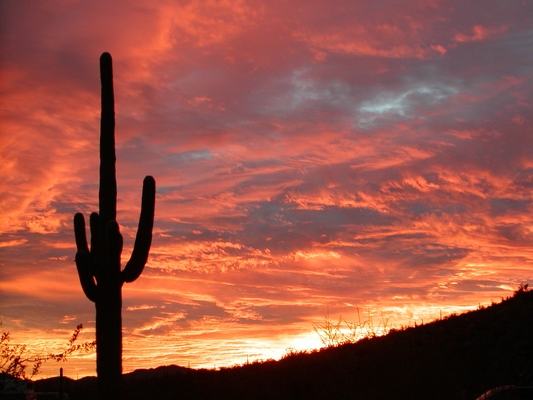
Saguaro National Park courtesy of the National Park Service
Cleaner Air, Clearer Skies
Protect our air, health, and national parks and wilderness areas by acting on Regional Haze.
We can accelerate our clean air goals by engaging in the 2022 Arizona Regional Haze process!
Efforts to provide a just and equitable energy transition in Arizona continue despite setbacks and foot dragging by the Arizona Corporation Commission (ACC) and the Arizona Department of Environmental Quality (ADEQ). The fight for this transition is also a fight for clean air, for the global climate, and for our health. This year, ADEQ has drafted an air quality plan known as a State Implementation Plan (SIP), required by the Clean Air Act, which addresses haze-causing pollution being emitted from various facilities around the state, including power plants and cement kilns. This plan presents an opportunity to help reduce pollution that obscures the skies over parks and wilderness areas, and harms both our health and the climate.
Arizona still has numerous coal and gas plants, along with other industrial polluters including copper smelters and cement kilns, which emit a host of harmful pollutants. The emissions from these facilities include greenhouse gases that contribute to climate change, particulate matter, volatile organic compounds, sulfur dioxide and nitrogen oxides, as well as other pollutants that harm our health, the environment, and disproportionately the communities near these facilities. Now that the SIP has been released, we have the chance to advocate for the maximum emissions controls and on which sites ADEQ has chosen to address. Engaging in this process to clean up the air over national parks and wilderness areas is also an opportunity to support environmental justice and fight climate change.
Which sites are we talking about?
This process is intended to address many facilities around the state that negatively impact our communities and “Class I Airsheds” (wilderness areas and national parks). The culprits include dirty fossil-burning facilities that monopoly utilities are fighting to keep running, including but not limited to coal plants – Springerville, Coronado, and Apache generating stations – gas-fired power plants (like Sundt-Irvington), and industrial facilities for mining (ASARCO), smelting and cement production (like the CalPortland Rillito Cement plant).
How strong is ADEQ’s draft plan?
The SIP draft from ADEQ missed the biggest opportunities to protect our health and increase airshed visibility, requiring lax emissions controls on or entirely overlooking multiple significant pollution sources in Arizona. For the eleven sources it does address, ADEQ concludes incorrectly that nearly no control improvements are needed. There are eight more facilities, including the Coronado, Apache, and Cholla coal plants, which are not included for review at all.
With the current plan, more than 50,000 tons of SO2 and NOx will continue to be released into the air without further controls for at least another decade from selected and non-selected sources. There was a lack of sufficient analysis given to disparate impacts of health-harming emissions on communities of close proximity, low-income, and people of color – those on the frontlines of environmental injustice – despite a clear EPA directive to include these considerations.
As it stands, the SIP does not comply with the directions of the Regional Haze Rule under the Clean Air Act. If ADEQ fails to rectify these and other shortfalls in the plan, the Environmental Protection Agency will step in to enforce federal regulations, which delays controls needed now.
What can we do to help keep air polluters accountable?
Comment now on the State Implementation Plan (SIP). Please go to our Action Page to personalize and easily submit a comment – the deadline is July 14th.
Give verbal comment at the SIP virtual public hearing on July 14th at 9:30am. Register here and mark your calendars!
Join the Clean Air story initiative by sharing a short personal experience about the importance of clean air. Hikes with great or not-so-great visibility, changes to outdoor places you have noticed, issues that haze-caused visibility reduction has caused, and health issues that you and your loved ones may have that are associated with poor air quality are all great short story topics. Share your video or picture story and we will feature it on our social media!
Submit your story and video or photo(s) here.
Please see our ACTION TOOLKIT with talking points, directions for writing Letters to the Editor, and more. Also see our Chapter calendar for virtual meetings related to clean air and Regional Haze to learn more.